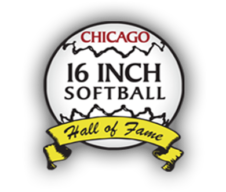THE HOME FRONT – By Don DeBat
Chicago, a world-class city, is buzzing about the possibility of hosting the 2016 Olympics and the related real estate development boom that would accompany the games.
Experts say local real estate developers are just itching to get their hands on the Olympic Village site, the 37-acre McCormick Place truck staging area, or at least the air rights above the depot.
One scenario calls for the Metropolitan Pier & Exposition Authority (McPier), a city-state agency controlled by the city, to sell the air rights it owns over the land south of McCormick Place to a consortium of developers who would build several thousand apartments for nearly 17,000 Olympic officials and athletes.
After the two-week Olympics ends, many of the apartments at the $1.1 billion Olympic Village would be converted to a new Near South Side condominium neighborhood that likely would resemble an extension of the giant Central Station development near Soldier Field.
Some of the money McPier and the city make off the air rights deal would be funneled to Chicago 2016, the local Olympic organizing committee which would use the funds to develop a temporary Olympic stadium in Washington Park on the South Side.
Meanwhile, nearby Grant Park, Chicago’s green front yard and site of a dozen softball diamonds, would likely become an ‘Olympic Fest’ location’a party playground that would attract 100,000 people a day with high-tech international-nation kiosks, giant video screens showcasing live Olympic events and big-name entertainment. Upper Hutchinson Field, a four-diamond complex on the west side of Columbus Drive, is the proposed site of Olympic archery competition.
With all these grand plans and trampled grass on the drawing board, Chicago-style 16-inch slow pitch softball’a local sport that relies on public park space’could really suffer, enthusiasts say. The Washington Park site chosen for the temporary Olympic stadium currently is used daily by South Siders for softball leagues. Softball likely would be eliminated at the park, experts say.
‘Sixteen-inch softball is Chicago’s game, but it is not on the Olympic agenda,’ said Gary Thorsen, president of the Chicago 16-Inch Softball Hall of Fame. Visit: www.16inchsoftballhof.com.
The group currently is hunting for a permanent Chicago-area site to erect a museum to honor inductees and the history of the game, which ironically was born indoors in 1887 in a gym at the old Farragut Boat Club on Lake Park Avenue near 31st Street’a softball toss from the proposed site of the Olympic Village.
Historians say on that chilly Thanksgiving Day, George Hancock, a reporter for the Chicago Board of Trade, picked up a boxing glove and tied it into a sphere using the laces. He marked off bases and home plate on the gym floor with chalk and used a broomstick for a bat.
Today, 120 years later, dozens of teams and hundreds of softball players flock to Balbo and Columbus Drive for softball league games in Grant Park on an average weekday summer evening.
In the late 1970s and early 1980s, Grant Park attracted nearly 300 teams with nearly 6,000 players. It was one of the biggest slow pitch softball leagues in the nation.
However, softball activity at Grant Park has declined in recent years as lakefront festivals increased, developments such as Millennium Park expanded, and affordable nearby parking was gradually removed. Interest in softball among the city’s youth also slipped, but it recently was revived as public high schools added 16-inch softball as a team sport, and the game is rising in popularity.
With 16-inch softball likely to be squeezed out of Grant Park and Washington Park to make space for the 2016 Olympics, enthusiasts say now is the time for the city to set aside a few acres and plan a new South Side softball park and Hall of Fame Museum near 31st and Lake Park, where the game was born.
Experts suggest the proposed new softball/museum complex should include at least 12 diamonds designed in three ‘pinwheel style’ clusters with four diamonds each like the Softball City complex in Detroit, or similar to James Park in Evanston.
A central concession stand behind the four home plates would be the hub of each four-diamond cluster, and parking would be provided on the perimeter of the diamonds. ‘The beauty of the pinwheel design is that several games can go on simultaneously in a fairly tight area without players from different contests running into one another,’ said Thorsen.
Here’s one final suggestion. Why not name the softball complex Mike Royko Park, to honor the memory of the city’s greatest newspaper columnist, a Hall of Fame player, and one of softball’s greatest promoters?
*The Home Front, Don DeBat’s weekly real estate column syndicated by DeBat Media Services, unravels the complexities of home buying, mortgage shopping, homeownership, renting, building, renovation and remodeling. For more home-buying information visit his website at: www.dondebat.net.
